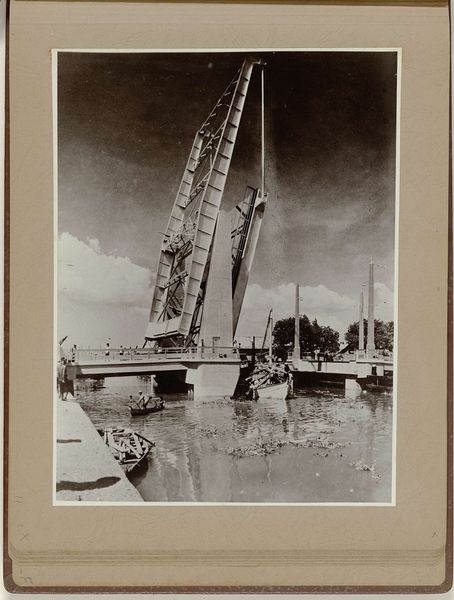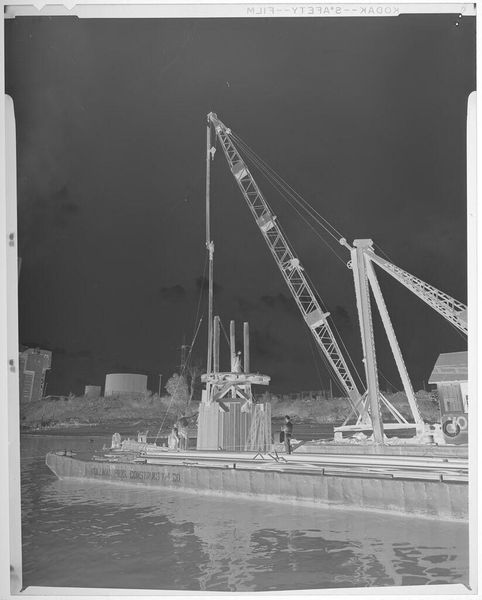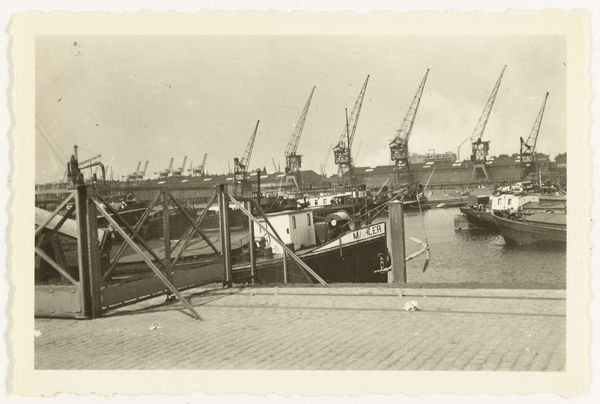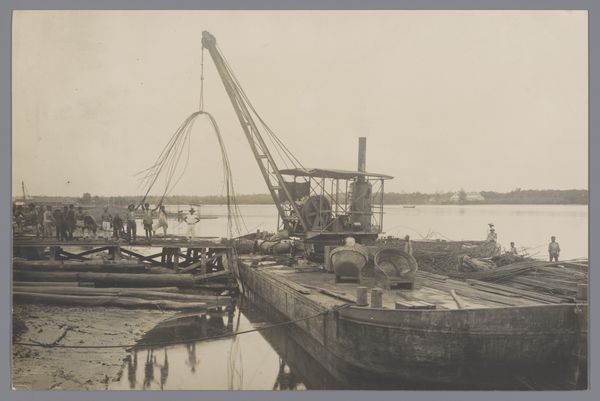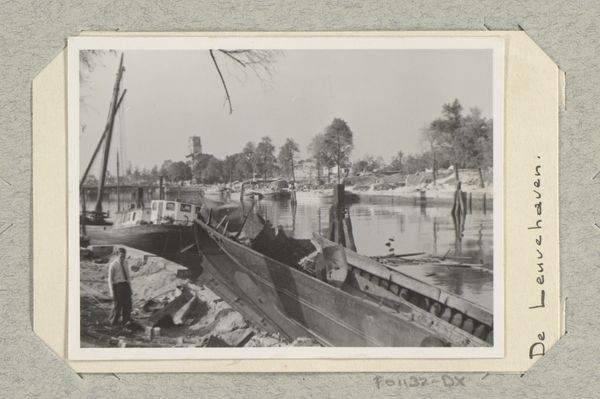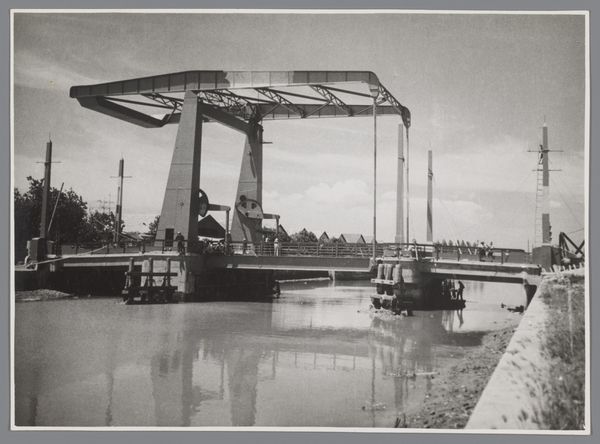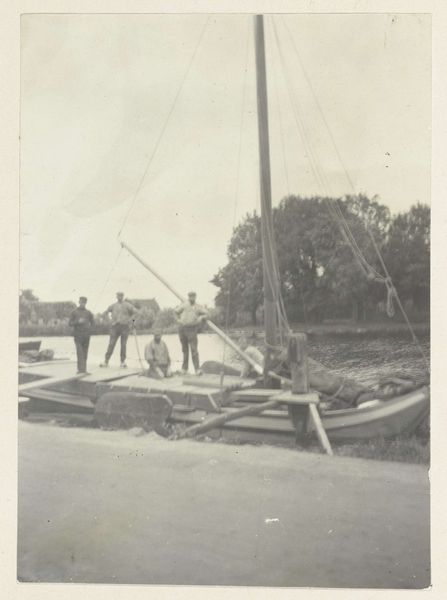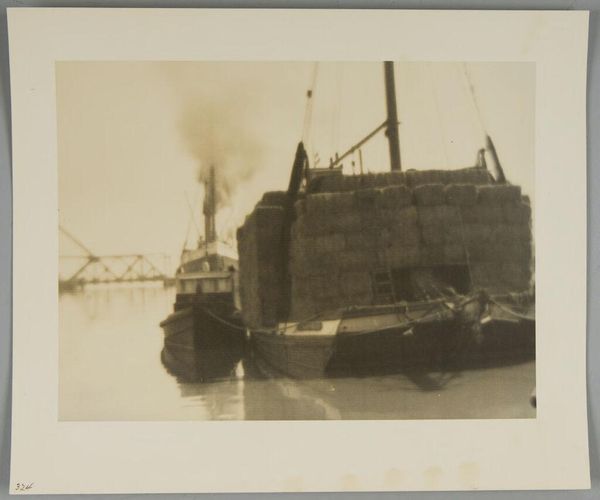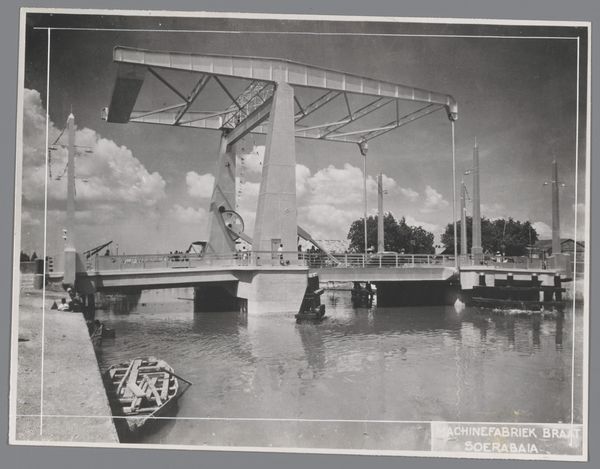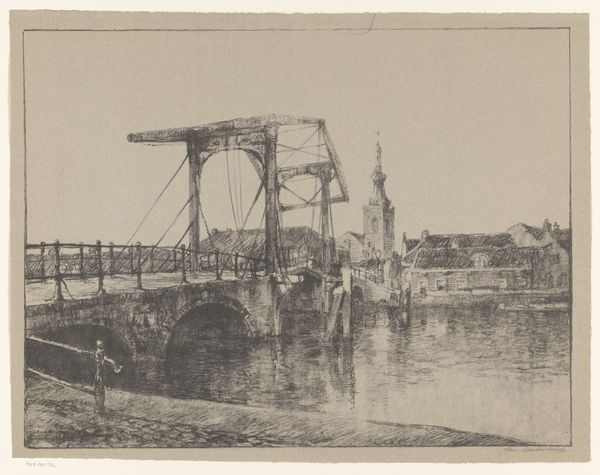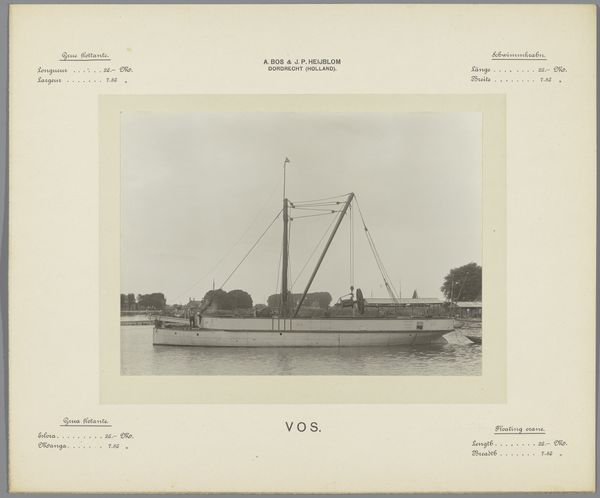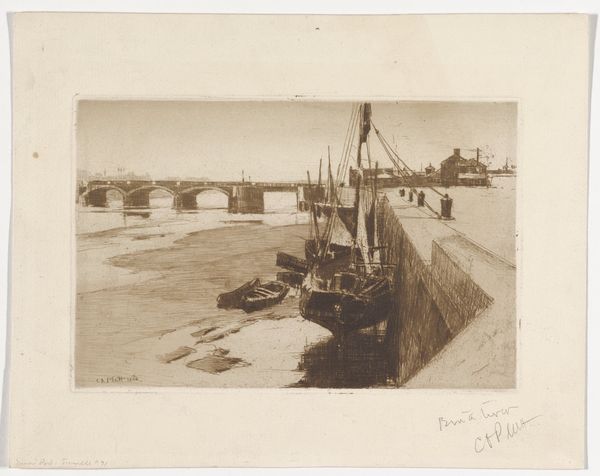
photography
#
muted colour palette
#
photo restoration
#
landscape
#
photography
#
geometric
#
cityscape
#
modernism
#
realism
#
monochrome
Dimensions: height 220 mm, width 155 mm
Copyright: Rijks Museum: Open Domain
Editor: This photograph, “Admiraal Ferwerdabrug,” was taken by Isken in 1940. It depicts a bridge, seemingly mid-operation, in what appears to be a bustling cityscape. What catches my eye is the texture of the photograph itself, it seems quite raw and unfiltered. What do you see in this piece? Curator: It's precisely that raw quality that resonates. Consider the socio-political context of 1940; photography, as a medium, offered a purportedly objective representation of reality. But here, the visible grain and limited tonal range become active elements, reminding us of the material process behind image-making. The photograph ceases to be a mere window, drawing attention to the labor and technology that produce such imagery, while a country may be gearing up for labor on another scale entirely. Editor: That’s interesting, I hadn’t thought about the labor involved. It's like the photograph becomes a product in itself, reflecting a specific moment of industrial capacity. Curator: Precisely. Look at the bridge: its mechanical elements are prominently displayed. Isken isn't romanticizing the city, but presenting the urban landscape as a site of production and circulation. How does this bridge, a physical structure enabling movement, mirror the photograph’s ability to circulate information and potentially influence perception? What do you think this choice entails in the cultural dialogue of its era? Editor: So, you're saying the photograph doesn't just show us a bridge; it also reveals the socio-economic processes that made both the bridge and the photograph possible? Curator: Exactly. It challenges us to think critically about the means of production behind the images we consume and the very materiality of it. The bridge serves the economic life of a people. Photography serves as a reflection of a material circumstance, but it too also serves the market that will sell it. It is no mistake that a photographer documents the economic process itself, not unlike the industry they must interact with in creating and circulating such a material object. Editor: I never thought about the material aspects and economic implications of a photograph like that before. I will definitely think about labor in art-making differently from now on. Curator: And hopefully apply these approaches across a wider variety of mediums!
Comments
No comments
Be the first to comment and join the conversation on the ultimate creative platform.
